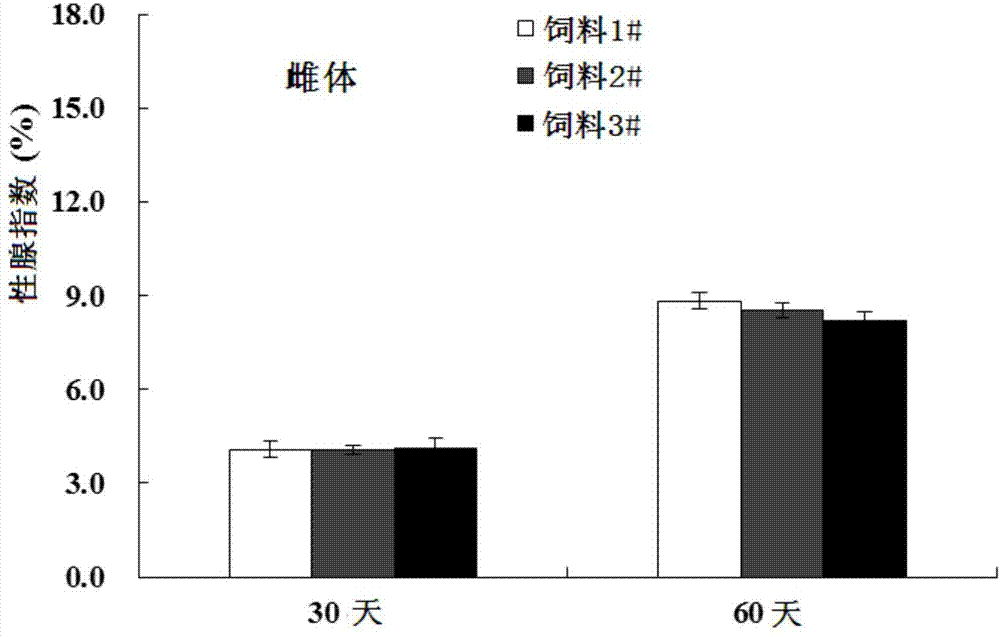High-valued utilizing method of haematococcus pluvialis algal residue in economic crab fattening fodder
A high-value technology of Haematococcus pluvialis, applied in animal feed, animal feed, application, etc., can solve problems such as unsatisfactory crab breeding, unstable source and quality, and safety doubts, and achieve a reduction in bait Cost and breeding risk, realizing high-value utilization, and ensuring the effect of fattening effect
- Summary
- Abstract
- Description
- Claims
- Application Information
AI Technical Summary
Problems solved by technology
Method used
Image
Examples
Embodiment Construction
[0050] Specific implementation examples
[0051] In order to make the technical means, creative features, goals and effects of the present invention easy to understand, the present invention will be further elaborated below through "Application example of Haematococcus pluvialis algae residue on river crab female body fattening feed".
[0052] 1.1 Determination of astaxanthin and other main nutrients in the algal residue of Haematococcus pluvialis
[0053] Acetone was used as a solvent to extract the total carotenoids in the algae residue, and the astaxanthin content was determined by liquid chromatography. The chromatographic column was Luna 3u Silica (150mm×4.60mm, phenomenonex, USA), and the mobile phase was n-hexane and acetone ( 83:17, V / V) (Tume et al, 2009), according to the standard method of AOAC to determine feed moisture (105 ° C drying method), crude protein (Kjeldahl method) and crude ash (550 ° C burning method ); using chloroform:methanol (V / V=2:1) to extra...
PUM
 Login to View More
Login to View More Abstract
Description
Claims
Application Information
 Login to View More
Login to View More - R&D
- Intellectual Property
- Life Sciences
- Materials
- Tech Scout
- Unparalleled Data Quality
- Higher Quality Content
- 60% Fewer Hallucinations
Browse by: Latest US Patents, China's latest patents, Technical Efficacy Thesaurus, Application Domain, Technology Topic, Popular Technical Reports.
© 2025 PatSnap. All rights reserved.Legal|Privacy policy|Modern Slavery Act Transparency Statement|Sitemap|About US| Contact US: help@patsnap.com



